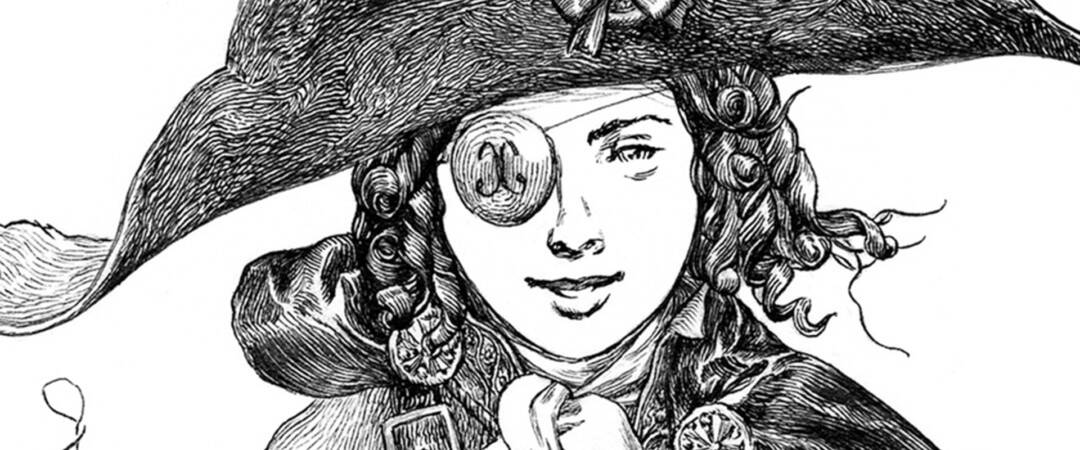
A story can be told in a great many pages, or a simple few — depending on the story it is you are trying to tell. For artist and writer Jeremy Bastian, his graphic novel ‘Cursed Pirate Girl‘ spans a great many pages and over a decade of work. Currently, four chapters in his six chapter mini-series exist, tangible in the real world. With each page of Bastian’s saga, the reader is given a multitude of perspectives and narratives simultaneously. Bastian treats his book like a two-dimensional pop-up — the finite edges of the page seen as a neverending span to fill with the smallest of detail that will echo across the story. ‘Cursed Pirate Girl‘ is Dickens and Twain with a healthy nod to Hergé’s Tintin, a picaresque adventure of an orphaned girl in search of her nameless father, a pirate captain.
The eponymous heroine of ‘Cursed Pirate Girl‘ is a thoroughly engaging character, she battles the ignorance and bully-ish attitudes of those she encounters with equal parts humor, kindness, and of course, a solid dash of pirate-like violence. Every step taken, a new adventure begins — some slight, yet all lead her closer to the end of her story. This is Bastian the author, a gifted storyteller. Bastian’s internal compass pulls inspiration from a variety of classic fiction and artistic styles which lends a richness and natural flow to the escapades of the Cursed Pirate Girl and her cohorts that are normally found in novels and cinema.
The genius of Bastian and his creation is found in the reading of the books and how they sit in our modern world. He doesn’t treat the Cursed Pirate Girl as special because of her gender, she is more pirate than she is boy or girl, but you can imagine Twain’s Huck Finn or Tom Sawyer, or literature’s other famous orphan, Dickens’ Oliver Twist, taking issue with a young girl being in charge and acting as she does. Bastian’s writing and illustration in ‘Cursed Pirate Girl‘ follows the lead of classic literature while, at the same time, pushing beyond the expected to create a book that feels both lived in, remembered, and entirely new.
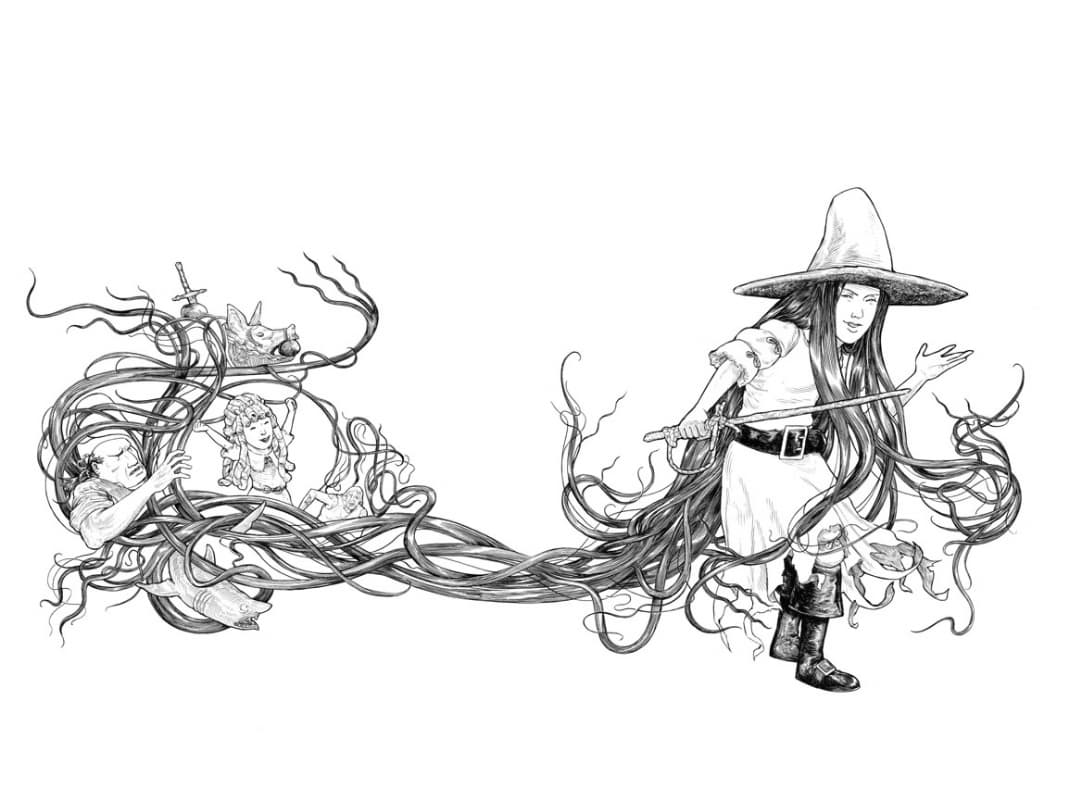
‘Cursed Pirate Girl’ by Jeremy Bastian
CJ: From page one, ‘Cursed Pirate Girl’ treats the reader to an onslaught of ideas, characters, and narratives, all at once, drawn by a patient and skilled hand. Knowing you live in the country on a farm, I imagine your regular day-to-day being mostly in solitude, which makes me wonder – does all that time in the quiet of your thoughts give the book the depth of story and richness of art that it has? Is that something you can notice?
JB: Yes, I would say that is key. Maybe even to my detriment. I just expect more out of myself than what might be healthy. My wish / goal is to make every new page or character or place better or crazier than the last I created.
When your environment changes, does your art as well?
It’s just a little more laid back at home. I feel like I can really take the time to work on an idea or layout until it’s just what I needed. And thankfully my publisher (Boom Studios imprint Archaia) really gets that and understands. This is what works for me, I need to work at a slow pace because I have crazy expectations but that helps me evolve as an artist. If I’ve got my headphones and my iPhone and inspiration, I can pretty much work anywhere. Usually, the only time I’m away it’s only for a short period of time, like a comic con, so it’s not like I’m working on my book anyway.

from ‘Cursed Pirate Girl’ by Jeremy Bastian
Was the writing of ‘Cursed Pirate Girl’ finished before you began drawing? Are you re-writing as you go?
Yes, I sat down with a couple of ideas I had jotted down and started writing. I think the full thing took me about three weeks to write while I was working as assistant manager at an art supply store. Chapters one and two are pretty much exactly the same, but I now take each chapter from that first draft (which was written on that tractor feed computer paper that’s connected, you know, with the detachable strips on the sides with all the holes, and when stretched out is twenty-five feet of story) and rewrite it to put in more action and depth. The end is the same, but over the years I keep coming up with new ideas to put in here and there. I guess that’s one of the benefits of working on a book for more than a decade.
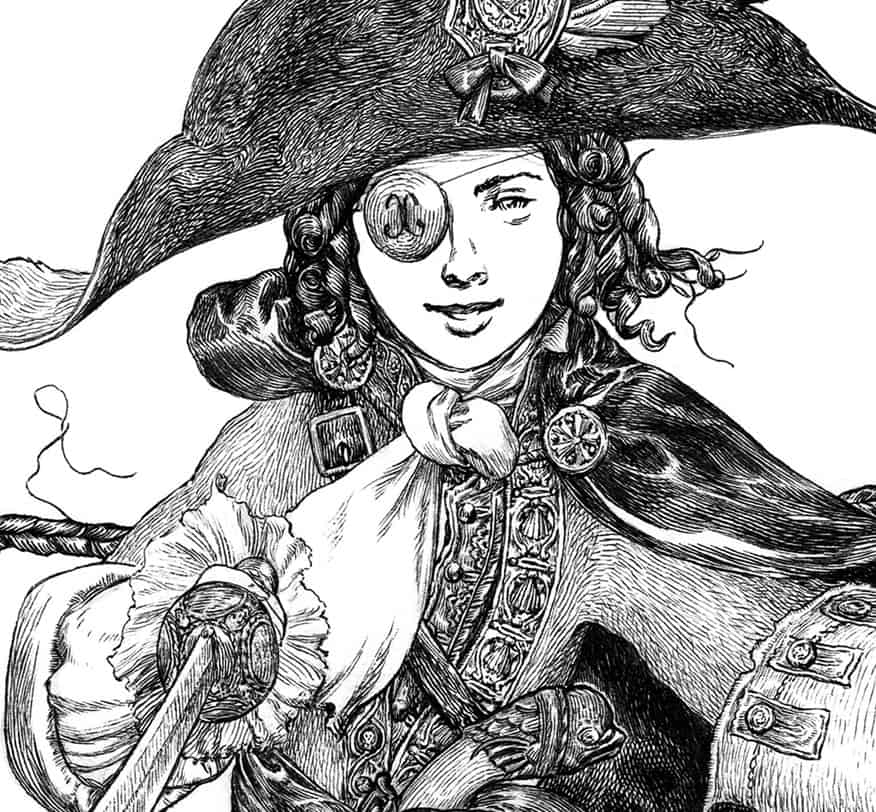
(Detail) from ‘ Cursed Pirate Girl’ by Jeremy Bastian
You don’t treat the cursed pirate girl as special because of her gender, but because of her intelligence, quick wit, bravery, and creative ways of getting out of tough situations. Was it a conscious decision to make her a girl rather than a boy?
A little, I guess I just picked the character to be a little girl because instinctively the view is they are the most vulnerable. Like the iconic image of the Victorian porcelain doll. With this story that ideal is tossed in the trash bin. Yes, she’s a character that just happens to be a girl. And if you try to treat her in a ‘special’ way she’ll probably punch you and ask, “What’s wrong with you? Now come on let’s go.”
‘Cursed Pirate Girl’ has been your main focus for quite some time, and with issues coming out on semi-annual basis. When you started writing ‘Cursed Pirate Girl’ did you know it was going to be as time-consuming as it is? Had you planned smaller books in between issues?
Originally, no, I didn’t think it’d take this long. When Dave (Dave Petersen, creator of ‘Mouse Guard‘) self-published ‘Mouse Guard’ I had one issue of a different story I wanted to do done, and together we collaborated on an anthology book we named ‘Ye Ol Lore of Yore.’ My book was called ‘Phantom Corp.’ and I did that at a pretty good pace. The art was on Bristol 11″ x 17″ and all done in Wolff’s Carbon Pencil. When I dropped that story and started full force on ‘Cursed Pirate Girl,’ I switched to Bristol 9″ x 12″ and inking with a brush. I thought that working on a smaller ‘canvas’ size would make it quicker to get done. I watched Dave put out issue after issue of ‘Mouse Guard’ and just realized I couldn’t compete with that level of output, not with what I had envisioned for ‘Cursed Pirate Girl’ and just knowing myself. Now it’s kind of a challenge to see what I can fit into that 6″ x 9″ (with a 5/8″ side border and 1/2″ top, 3/4″ bottom border) live area.
I’ve thought of doing small filler stuff with some of the side characters like Pook the Tarantula. I like that idea but I’m so behind where I’d like to be with the main book I just don’t have time. For me, it’s a matter of, ‘how many pages do I think I can get done this month.’ I struggle a lot with that.
Why go from working mainly in pencil with ‘Phantom Corp.’ to inking with a brush for ‘Cursed Pirate Girl’?
I still pencil everything out. When I ink, I do it with a brush to replicate the fine lines in an etching. The brush just gives off the finest, thinnest line compared to the Microns I’ve used before. I don’t really like nib pens. They are just too finicky for me and high-end tech pens like rapidographs involved too much maintenance for me.
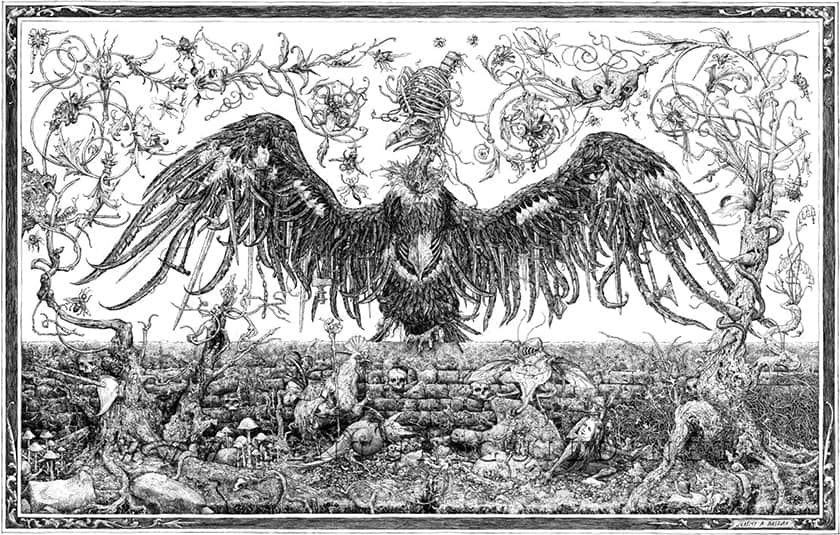
by Jeremy Bastian
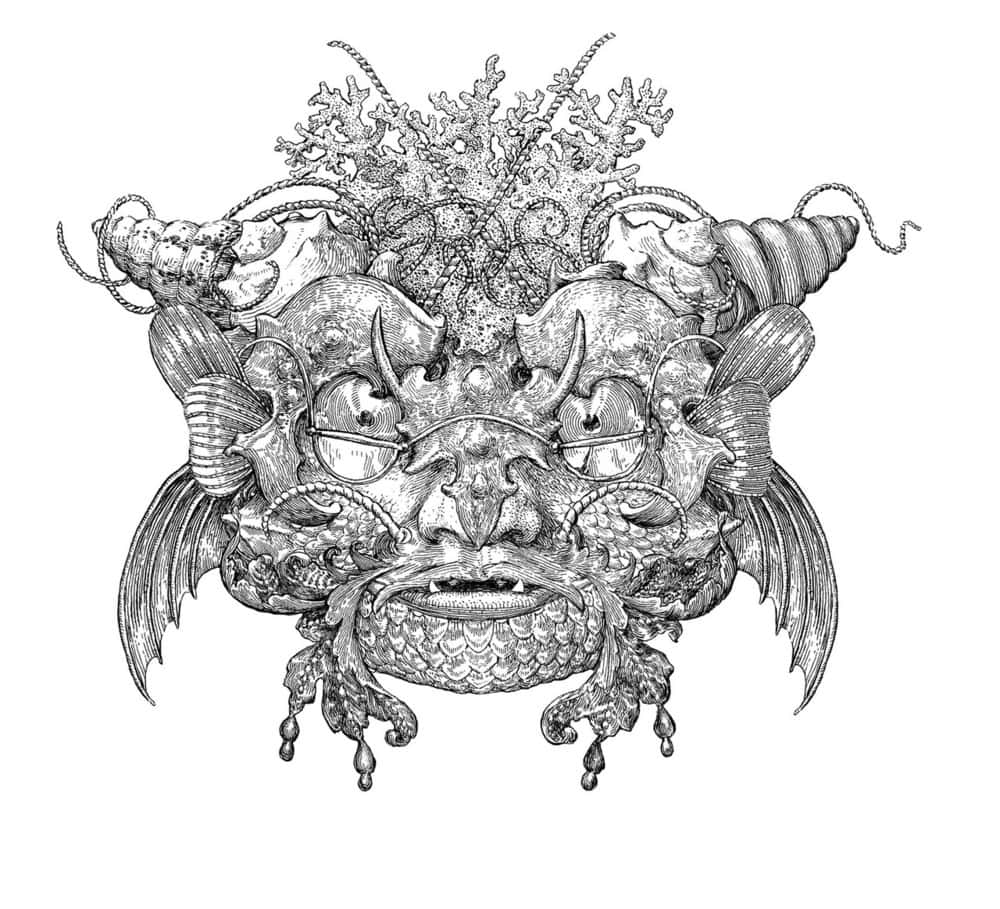
by Jeremy Bastian
Was your work with Dave and ‘Ye Olde Lore of Yore‘ your first work in comics?
I did do a short comic story for my high school’s student creative magazine. It was called the Palladian. From sophomore year to senior year, I was a contributor/staff member of the Palladian. It was a sci-fi story that involved alien warriors invading a temple and a dragon facing off against their leader. I think the issues of the Palladian went for $3. The next time I did anything that got published was a four-page short of ‘Cursed Pirate Girl’ I did for a comic art exhibition catalog at Eastern Michigan University. That story was reprinted in ‘Ye Ol Lore of Yore.’
I hadn’t realized you went from working in an art supply store to pretty much immediately have a ‘hit’ comic book and working full-time as an artist.
Well, as I was working there I was trying to polish up my portfolio and going to lots of comic conventions. Standing in portfolio review lines just to have an editor tear me up so I could go back home to work on what I needed to. Step and repeat.
Now picture this — at Art Attack, the art store I was working at, my little self-published first issue of ‘Cursed Pirate Girl,’ about 10 copies, sitting in a cardboard display box, that I built myself with a caricature of me drawn on matboard and taped to the front with a word balloon saying something like — ‘Hi, you may know me from helping you pick out the right sketchbook or cutting your matboard, but did you know I also draw? Check out my comic Cursed Pirate Girl.” The display box then attached to the wall just to the side of the front counter. My boss was very supportive. Now if you will, add this to that picture — another display box placed right next to mine, this second box I made as well, having a good idea of how to do it because I had just done mine, of about ten copies of David Petersen’s self-published issue one of ‘Mouse Guard.’ I think both books were about $3 apiece. I still have a couple of those, but had I known, I would have bought a lot more. I mean, they are working on a ‘Mouse Guard‘ movie now. The screenwriter is the same one who wrote the screenplay for Star Wars: Rogue One. Hah! I even included Dave as a mouse in an Art Attack window painting for one of the back to school sales. It was a pirate ship with all the Art Attack staff represented toting different supplies or what not and then a little mouse sitting on deck in a red short sleeve buttoned shirt with glasses and wirey black facial hair. He never worked there but would come over a lot on his lunch break.
‘Cursed Pirate Girl’ is one of the few graphic novels I’ve read that earns the ‘novel’ in that title. The story could have been a traditional book. Was that something you ever considered?
I never really considered myself a writer. I was going to comic cons and seeing indie artists with their books and knowing that I wanted to be a comic book artist decided I could set up at my local show. Then decided I should have more than a sketchbook of drawings if I wanted to make any money at it started coming up with story ideas.
I had one big samurai story that I created a whole bunch of characters for but lost the will after I lost the original massive piece of art I did for it to an ex. When ‘Phantom Corp.’ sorta flopped and I started on ‘Cursed Pirate Girl’ I had a feeling that this one was special. I had a lot of fun writing the characters and as corny as it seems, the script just really wrote itself. The writing had a flow I never really experienced before. I think I could write something now, but I’m a drawer so it’d definitely still need pictures in it.
What makes ‘Phantom Corp.’ earn the designation of ‘flop’ in your mind?
It really just came down to the fact that nobody was really as excited about it as I was. I thought it would appeal to a certain group of people, and when I really examined who I was making it for, it was basically me in high school. It was going to be a more violent kind of thing and I had really limited myself and my audience with that. I know there’s a lot of hypocrisy in that, I can see it when I’m typing this out. ‘Cursed Pirate Girl‘ is a book done for me by me and so was ‘Phantom Corp.,’ but besides satisfying my artistic wants I’d also like to make a living off of drawing. And limiting my audience at the beginning isn’t going to help that.
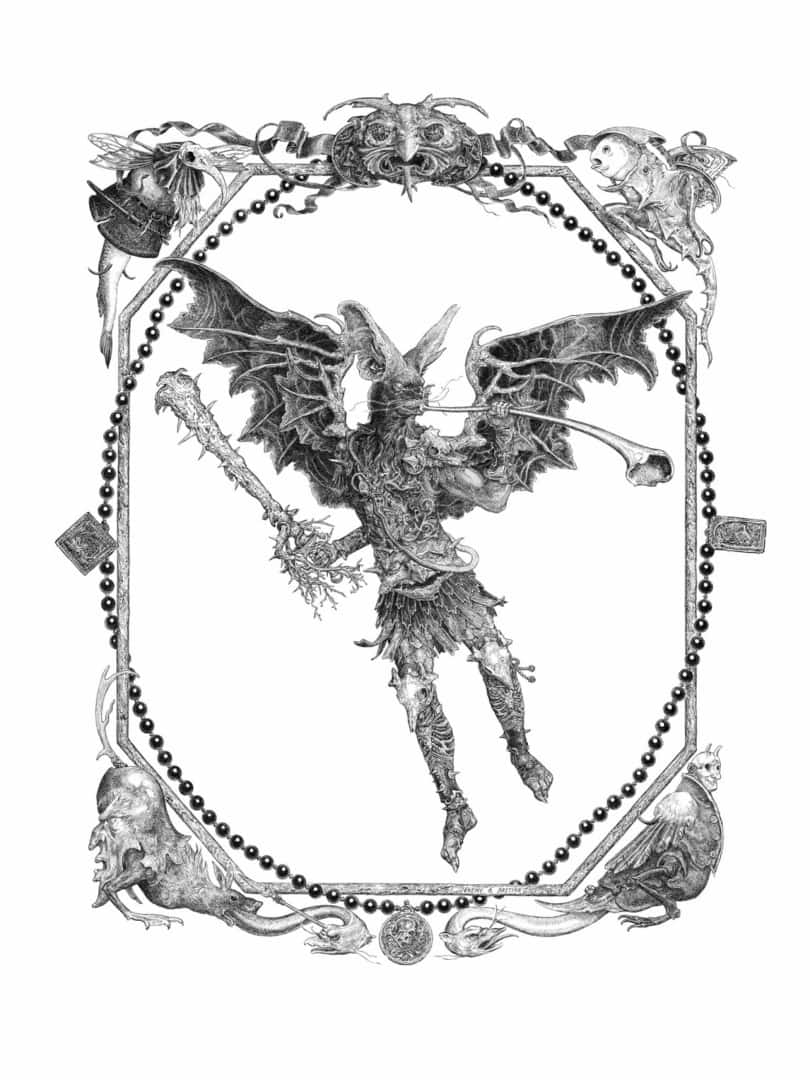
‘Sounding Of The Horn’ by Jeremy Bastian
Your style fits incredibly well with the themes of ‘Cursed Pirate Girl’ – pirate tales and the nautical environment makes for a very organic world, something that you excel at. Was your style cemented before you began on the book?
For the most part, yes. I wanted a very decorated look for this story. An ornate and textured world. I have evolved as an artist but the core is the same. The first artists that helped influence how I envisioned ‘Cursed Pirate Girl’ were Arthur Rackham and Walter Crane. Before I really knew anything about European comics, I was trying to do a European style book. More illustration based than action based. I grew up on superhero books but I wanted to do a comic more like a storybook.
Was it written based on what you enjoyed and felt confident drawing?
This is still my book, written for me and drawn for me. If you’re going to put out a story that is yours, you better enjoy every single inch of drawing it. I have challenged myself from time to time with ‘perspective,’ but it is not my forte. I think it is important to try to round yourself out as an artist. The trick is to still have fun with the uncomfortable stuff.

First draft, printout, tracing, and final art by Jeremy Bastian
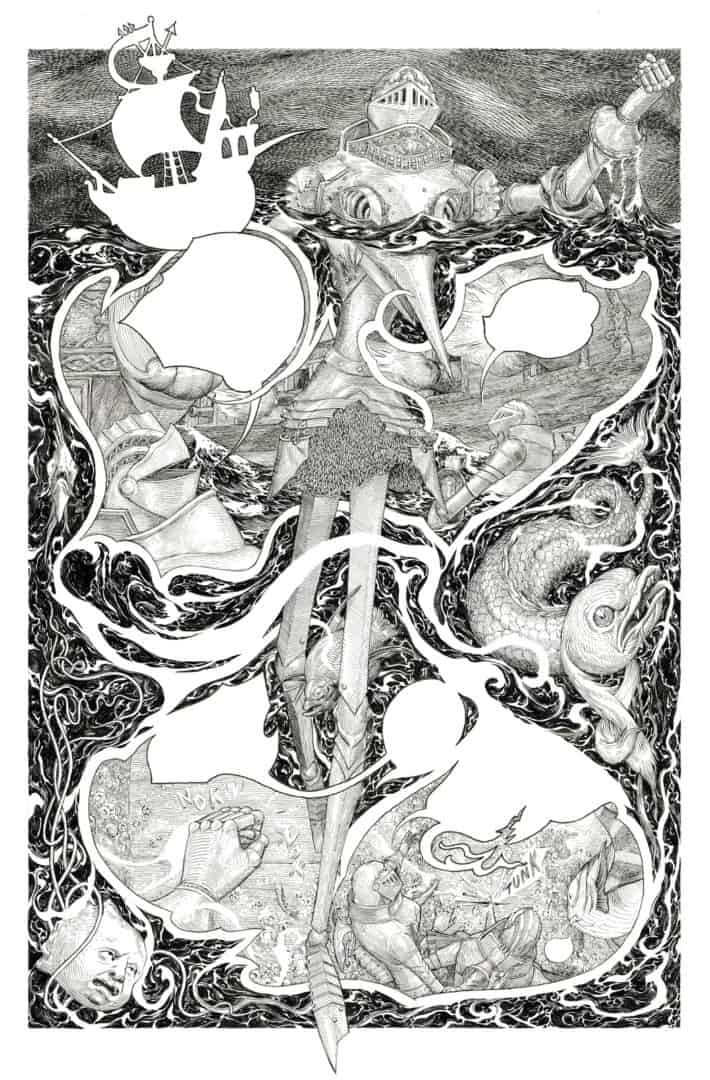
from ‘Cursed Pirate Girl’ by Jeremy Bastian
You mentioned that Phantom Corp. started with a limited audience — is that something you think about? For as gruesome as ‘Cursed Pirate Girl’ can be (the governor eating the Cursed Pirate Girl’s eye, Sharky devoured by a shark) it remains a family-friendly book. Are there turns in the story you re-wrote or edited to make it more all ages? Sharky’s death, for one, could have been far more violent if you had wanted it to be, but not sure that would fit with the style of storytelling you’ve established.
I knew I wanted ‘Cursed Pirate Girl’ to be an all ages but dark, like one of those original (not watered down) Grimm tales. I think it is getting a little darker further in, but not as bad as Harry Potter.
Your brushwork is tight and compact – hair-thin strokes filling every possible section of the paper. I have a signed and sketched in copy of ‘Cursed Pirate Girl’ and at first I couldn’t find the sketch, but realized that you paint so exact to where it looks like the art in the book. I could only make out the faintest of grey pencil markings around the sketch. How much planning and sketching goes into the actual drawing of the book?
Well, first I should note that the sketches I do in books when I sign them are actually done with a micron, that’s not brush. With the rest of the book, there is a LOT of drawing and redrawing things. I am like the opposite of say, a Kim Jung Gi. My first drawing really sucks and it takes a bit to work it up to something I’d want to show anybody. That’s one of the reasons I don’t show a lot of pencil drawings.
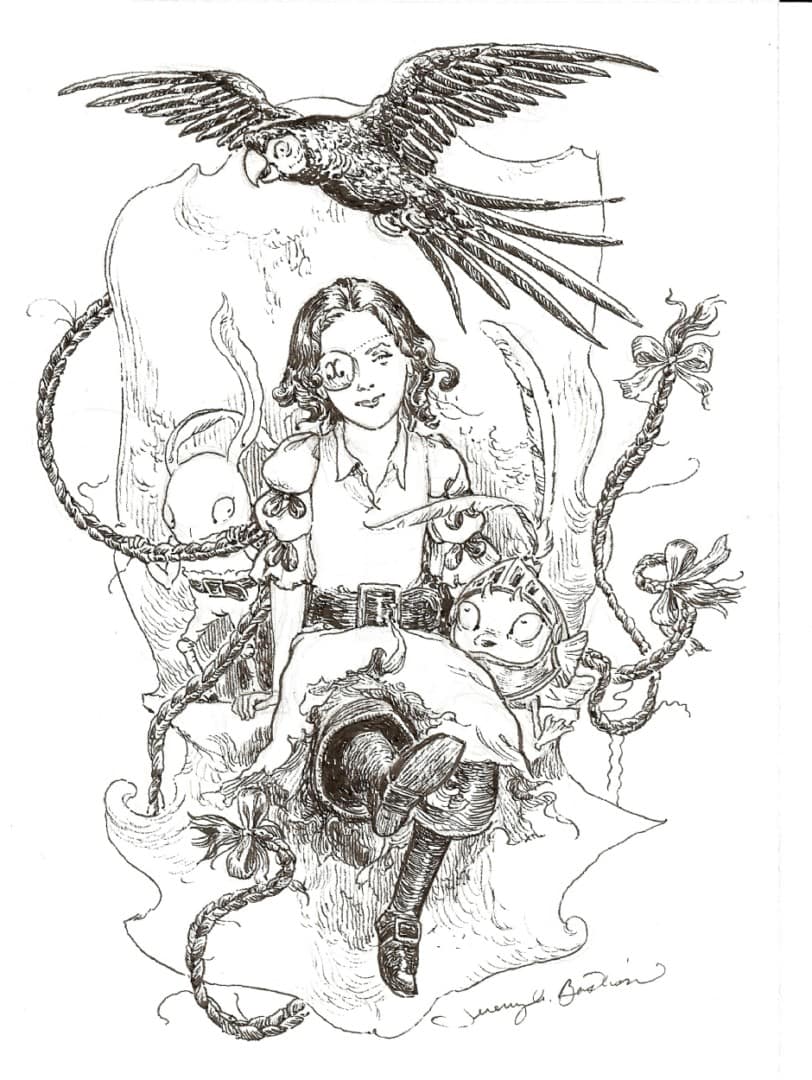
‘Cursed Pirate Girl’ by Jeremy Bastian
Are there ever pages that get 60% finished, then tossed in the garbage?
I’ve never started something and thrown it out, that far in. I’ll know before I finish the first panel or piece whether or not I want to continue down that path. I don’t rush things as a rule, so I don’t really start inking a panel until the entire flow of the page is worked out and I’m excited to draw it. When I do end up starting over, it’s because I’m not excited and I’m not looking forward to my time at the table. That’s when I decide, ‘I need to change this one.’
You’ve created prints for ‘Peter Pan,’ ‘Little Nemo in Slumberland’ and ‘Alice in Wonderland,’ three narratives at the root of inspiration for ‘Cursed Pirate Girl.’ Are you looking to novels more than comic books and graphic novels for inspiration?
Yes, my story is not an ongoing series, as much as I’d like it to be, I do have ideas for more stories, it just takes so long to do. I wanted to create a classic children’s tale with an iconic character like Peter, Little Nemo, Alice and even Dorothy (I‘m going to be doing a Wizard of Oz piece sometime in the future). I think it’s the dream of all storytellers that their story would one day stand alongside such tales. Not to besmirch Spidey and Wolverine though. My style just leans a different way.
In late 2017 you had a booth at MondoCon, a convention known mainly for pop culture and film inspired collectibles. Had you been in contact with Mondo prior to getting the invite to MondoCon?
I’ve known of Mondo for a long time. My friend David Petersen (creator of Mouseguard) was asked to do a couple of posters for them and I was really jealous. I always wanted to try my hand at that. When I learned that Mondo had created their own show I really wanted to be a part of it. I thought maybe if I had the chance to lay out a bunch of my work where the right people could see it, then maybe I might be asked to do a poster. So I tried year after year to get into the show, but it wasn’t until 2017 that I got in. It might’ve helped that I met Mitch (Mitch Putnam of Mondo) in San Diego months before and had the opportunity there to show him my work.
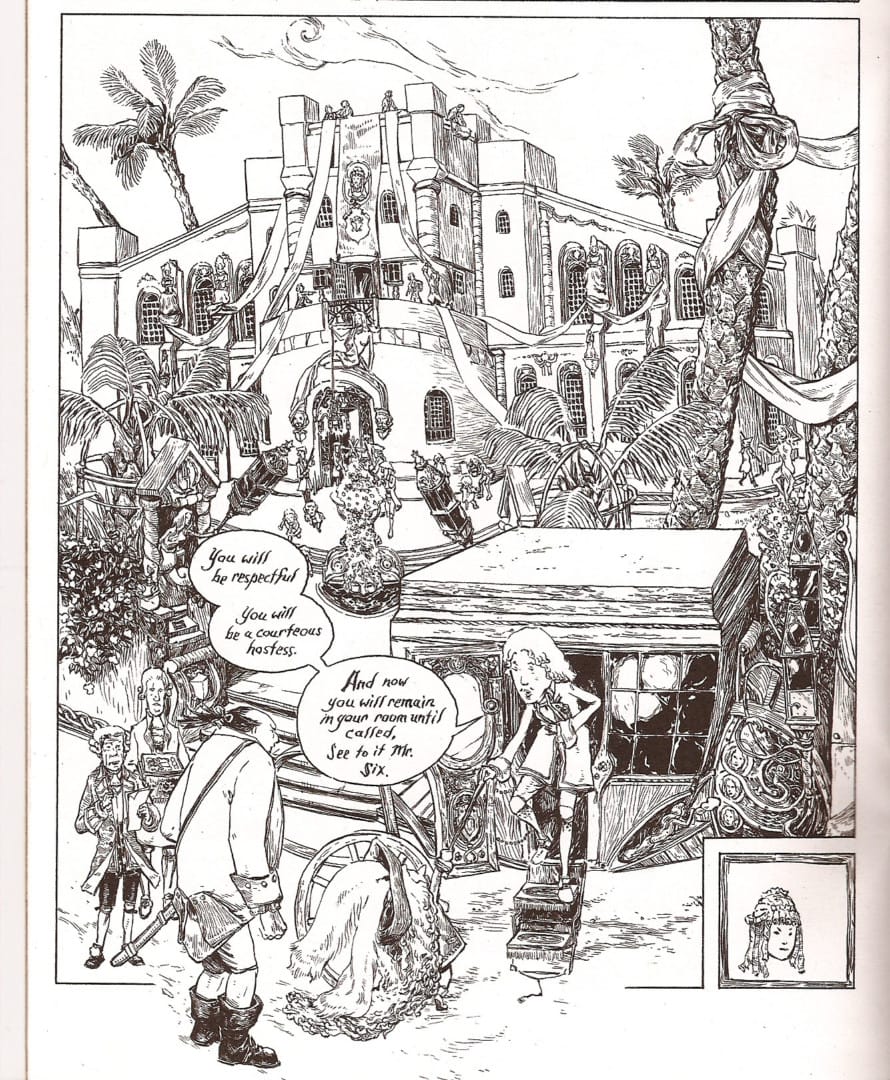
from ‘Cursed Pirate Girl’ by Jeremy Bastian
Was it a different animal than your usual comic convention?
It is a lot different. It made me think of the Spectrum Fantastic Art Live show I attended once. Both shows consist of a room just packed with the most talented artists that can make themselves available. It is very humbling and inspirational. The Mondo show also reminded me of a couple of French BD Festivals I’ve been to. Not as many artists as a regular comic book show so you really get to meet just about everyone and after show hours events that bring all the artists together where they really get a chance to converse. The Mondo show is a special creature unique to the U.S.
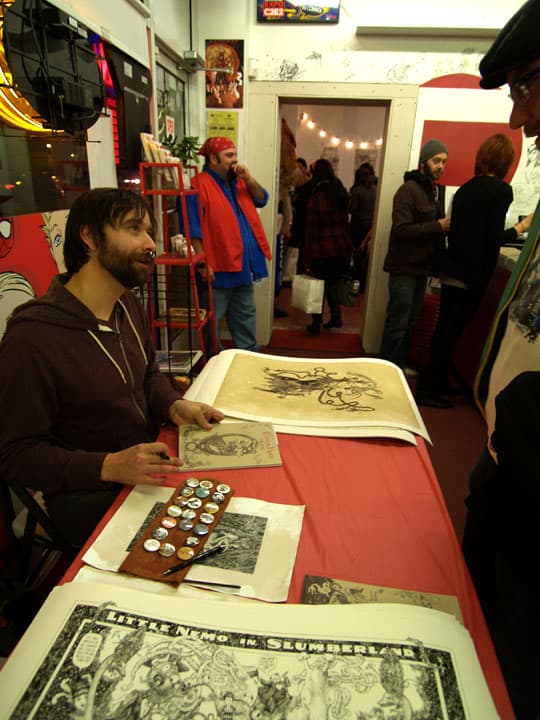
Jeremy Bastian at an event hosted by Century Guild | Photo Courtesy of Century Guild

Jeremy Bastian Tournee 2016
In 2015 you did a quite lengthy artist residence in France. Talking to some European illustrators who have attended the Angoulême comic convention in Paris and know your work quite well, speak of it with quite a bit of reverence. Is France, or Europe in general, a different type of audience for you than here in the States?
Yes, it definitely is. Here in the States we are just starting a bit of a comic book renaissance where people of all ages are learning to appreciate comics more. There is still a big stigma of comics being ‘for kids‘ here that sucks but in France it’s a revered art form. Bande dessinee (French for comic book) expects more in a way. In the U.S. you have a monthly floppy issue that is about 24 pages. In France it could take a year before the next tome is released and every book is hardcover. The thinnest book I have on my shelves from France is 48 pages and every page is done in watercolors. The styles and genres of bande dessinee are broader than ours as well. I’m really thankful that the US is starting to change in that regard and that you don’t have to draw the Marvel way, but they’ve been doing it successfully for decades. I think the comics code really messed with the evolution of the comic book here. That put the indefinite stamp of ‘for kids‘ on comic book culture.
I’ve been to many festivals in France and it just makes you feel special and appreciated. I have an amazing publisher based in Bordeaux, Editions de la Cerise, and they were asked to put on an exhibition of ‘La Fille Maudite du Capitaine Pirate’ (French for ‘Cursed Pirate Girl’) for Quai des Bulles, a comic festival in St. Malo. It’s the second biggest comic festival in France following the Angoulême festival. La Cerise got grant money from the government to produce this exhibition and I got paid to have my work exhibited to the public, at a comic book festival. Okay, one, they have exhibitions at comic conventions. These are elaborate displays of originals or just prints alongside props, photos, sculptures or whatever, to honor the sequential works of an artist or a specific book. I saw a Bill Watterson exhibit at Angoulême a couple years back, it was great. And two, the government offers money to help bring these to the public! These are museum quality exhibits, and there’s almost a certain level of competition to create a unique and interactive, creative display to these exhibitions.
The one La Cerise created (you can see pics and a video run through on my Instagram account @jeremy_bastian if you scroll down far enough) had handmade wooden frames, and podiums to display originals. The podiums had magnifying glasses connected to them. There was a very large reproduction of a particular piece I did that had a large box frame and red velvet curtains and was playing medieval music from a hidden speaker.
There was a raised platform (hand built) with another hidden speaker playing the sounds of water lapping like under a dock, and on the platform was a brass telescope pointing out of a window. The window was the window of one of my comic panels blown up to wall size and then lined up with an actual window so you could look through it and see down the road where there had tied a gigantic replica of the wanted poster I created for ‘Cursed Pirate Girl.’ This poster was attached to the St. Malo tourism office. And this was just one of the many exhibits they were showcasing.
I’ve had people wait in a line for me for hours to sign their book and do a small drawing and I consider that the highest honor that they would wait like that. Last year at Angoulême I sat and signed for 10 straight hours, that’s no joke. I had a couple of bites of lunch and fortunately not much to drink. I still ache a little bit thinking of that Saturday. But it was worth it. I’m a little artist at a smaller publisher there and if someone wanted to wait in line they were going to get their book signed. No matter how long it took.
And unlike here, where during the first shows I had the Volume 1 hardcover out, I could sign book after book then look up to find a couple hours had gone by, that Saturday there wasn’t one moment during that stretch that I didn’t finish one book dédicace and didn’t have another book placed immediately in front of me. It was glorious. To be fair, I do a lot more U.S. shows than I do French shows though.
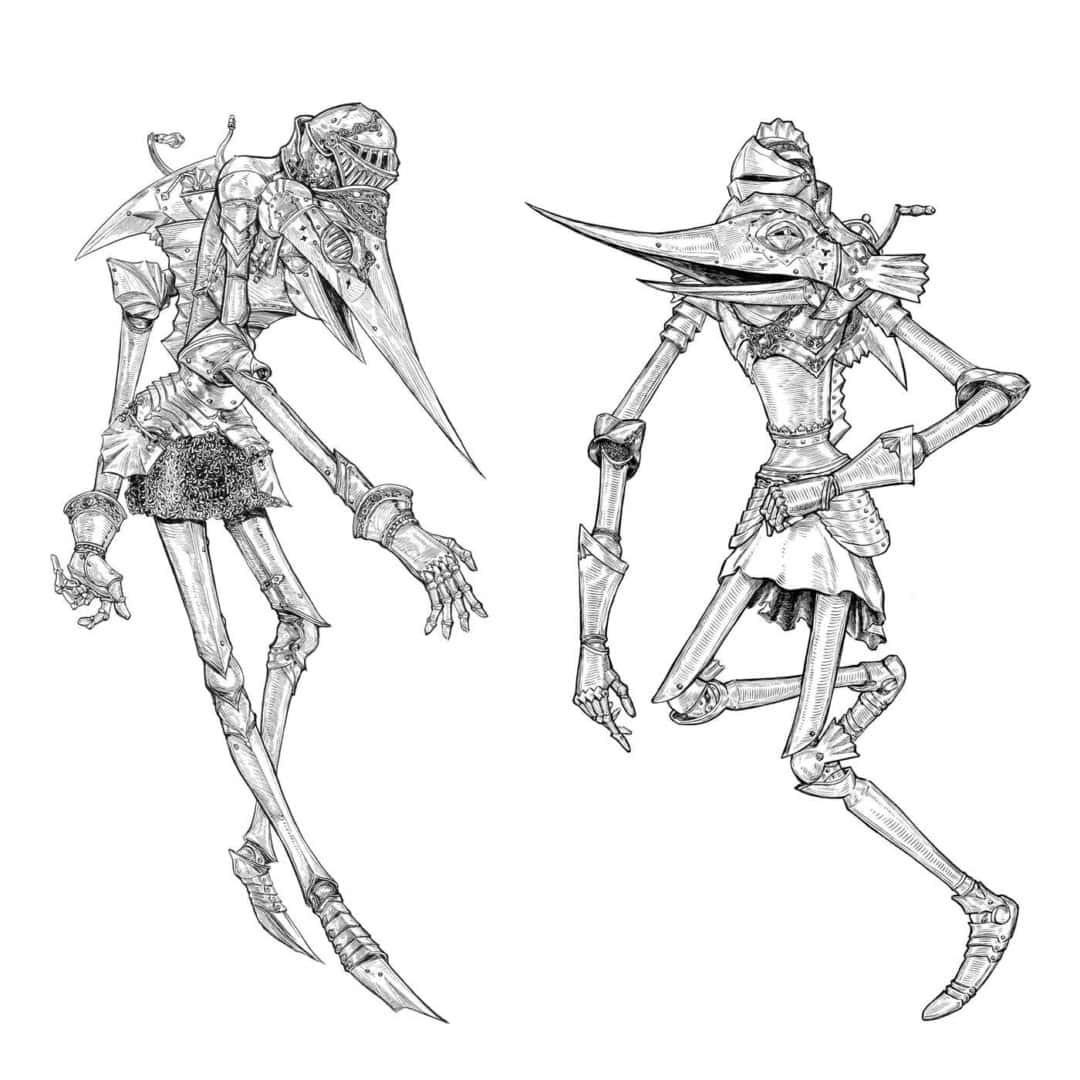
The Swordfish Brothers from ‘Cursed Pirate Girl’ by Jeremy Bastian
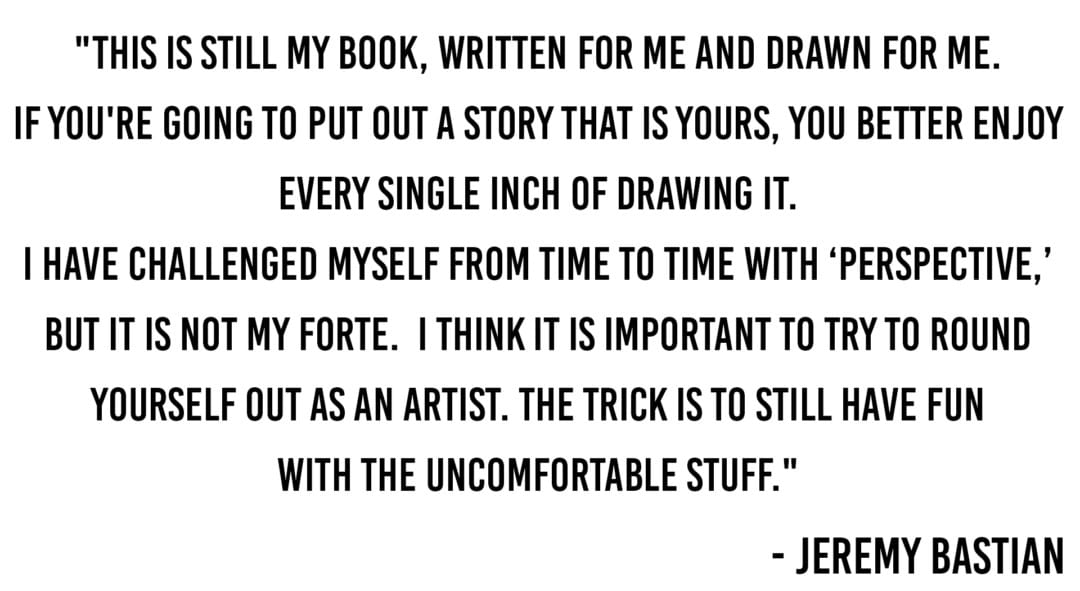
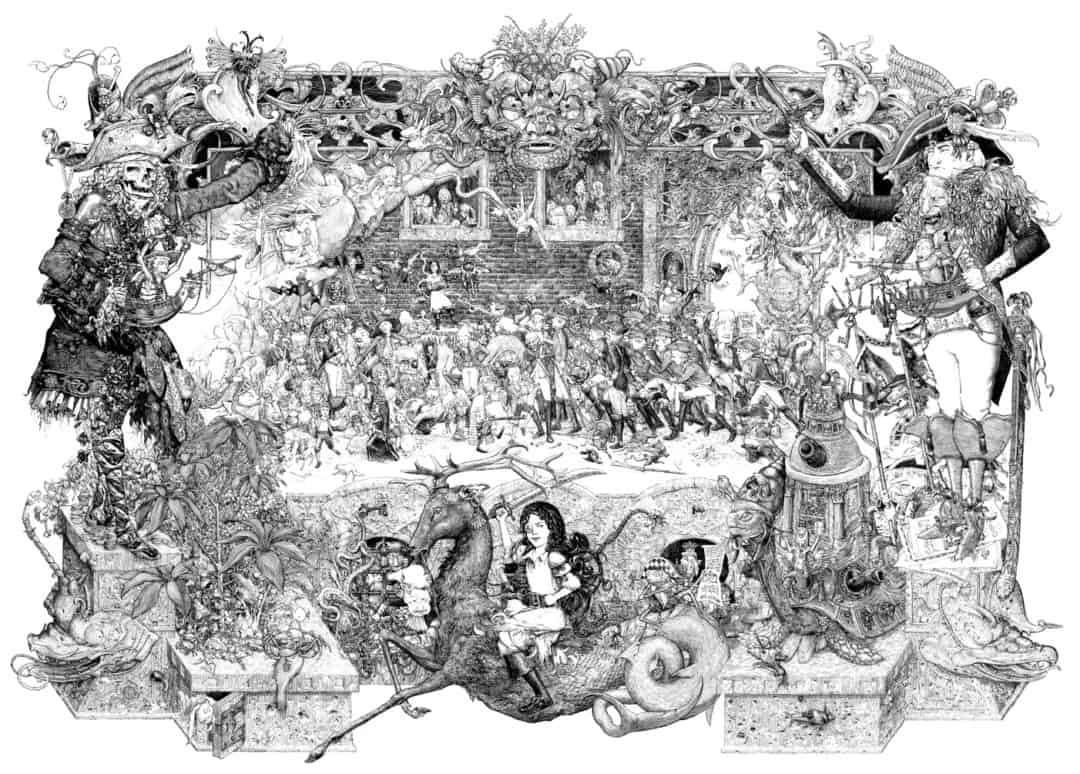
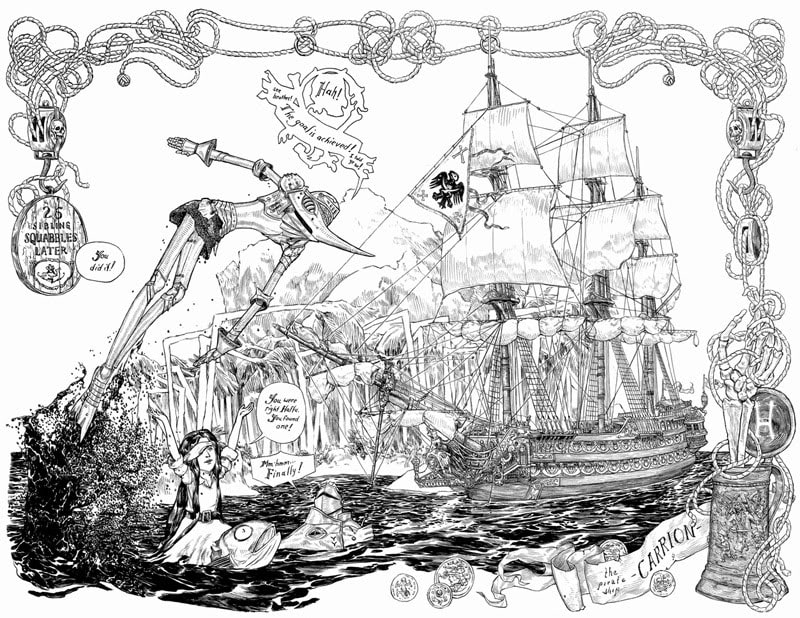
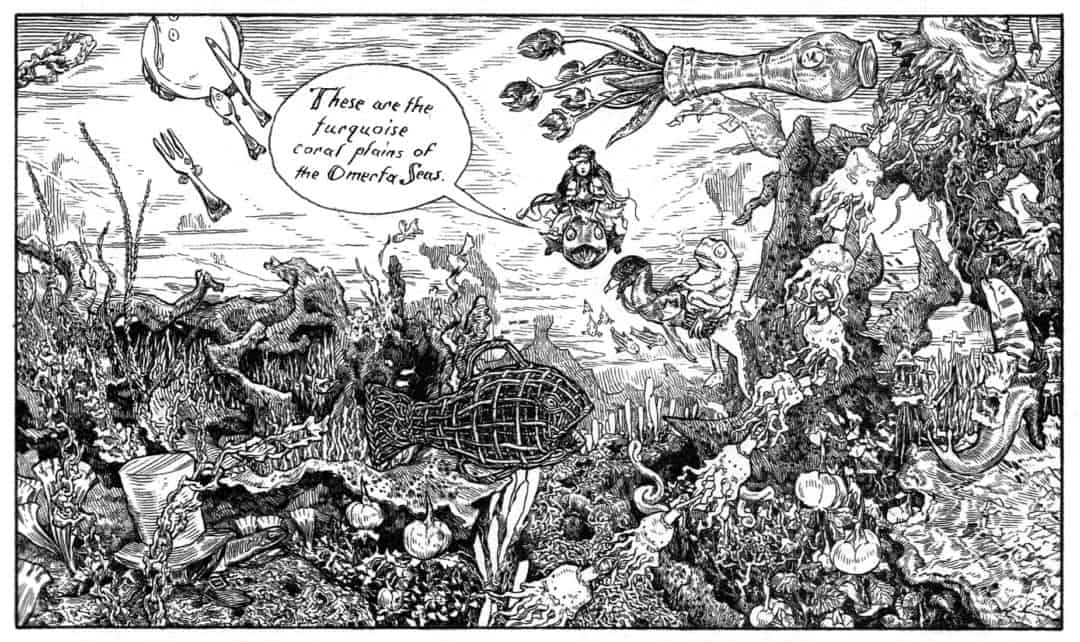
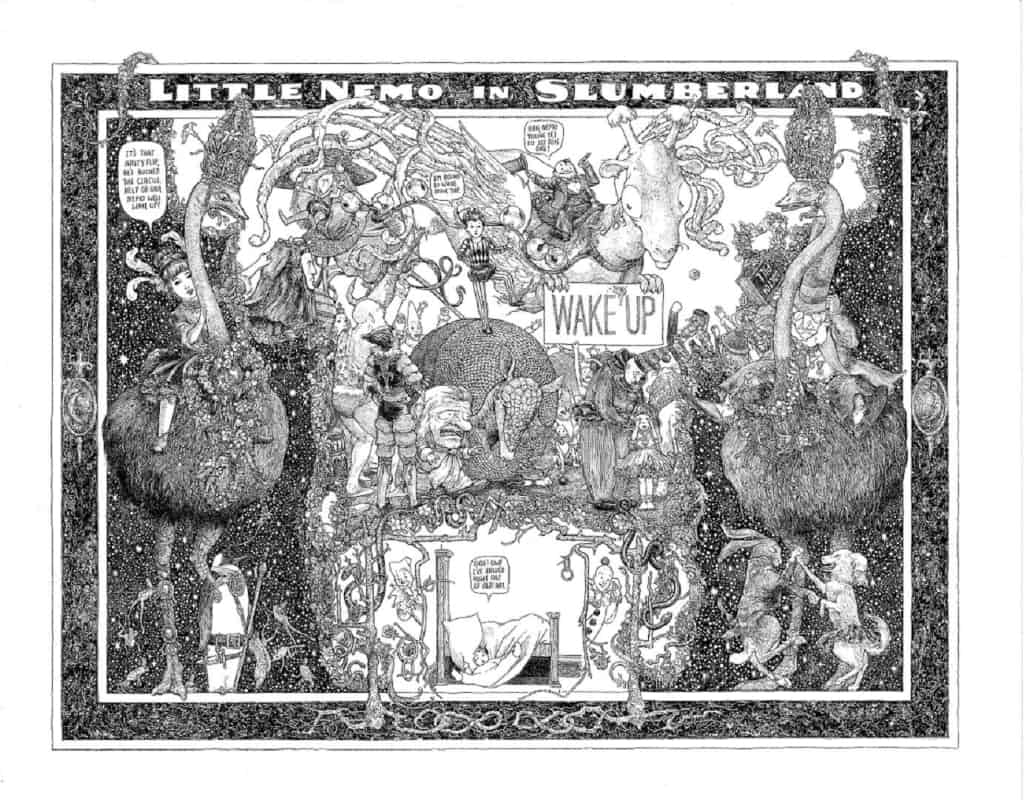

Excellent article. I’m fortunate enough to have three pieces by Jeremy and one turned up in the article – solo shot of CPG. That was fun. You can see them all here: http://www.comicartfans.com/gallerydetailsearch.asp?artist=Jeremy+Bastian&GCat=10225.
One is the recently acquired 1st ever CPG commission.
Wonderful book. Check it out!